B Y RAM O N CAM PAYO






 he presentation of this book arises from a true need, a calling on behalf of many people, many students and many friends, who are interested in my study and memorization methods. I would like to thank all of you for the splendid "pressure" you have put on me, thanks to which I am now sitting in front of the keyboard of my computer. I am taking those first steps toward writing this complete course, which covers all the necessary know-how to satisfy curious readers, beginners and professionals alike.
he presentation of this book arises from a true need, a calling on behalf of many people, many students and many friends, who are interested in my study and memorization methods. I would like to thank all of you for the splendid "pressure" you have put on me, thanks to which I am now sitting in front of the keyboard of my computer. I am taking those first steps toward writing this complete course, which covers all the necessary know-how to satisfy curious readers, beginners and professionals alike.
So, you all form part of this book to a certain extent. I would like to return that favor by sharing with you the secret of all of our mental power. I hope that you will learn to use every one of our mental, active, and creative mechanisms to triumph in life, not only through the correct utilization of my study techniques, but also reinforcing your personal confidence and psychological preparation to the maximum.
I couldn't end this section without giving special thanks to Maria Jesus Garcia, more familiarly known as "Chus," my wife, my friend, my partner, my secretary, my assistant....
I have been able to do so many wonderful things, thanks to her!
For her and for all of you, my affection and gratitude.
-Ramon Campayo World Memory Champion and Recordman
the Mind

This is the faculty contained within each one of our brain cells that allows us to think, reason, memorize, imagine, learn, feel, choose, etc. Because there is an infinitely greater number of cells in our brain than in the rest of our body, we get the sensation that our mind resides there, and this is correct to a certain degree.
The mind is complex. It has conscious and subconscious capacities, and, therefore, functions on these two levels.
We use the conscious mind exclusively for reasoning, choosing, and sometimes thinking (thought is mainly controlled by our subconscious).
On the other hand, different sensations control what goes on in the subconscious mind. This is where memory, feelings, and imagination mainly reside, which is why we are going to focus particularly on this area.
We can define the unconscious mind as part of the aforementioned subconscious mind, which is difficult to access. This is where past traumas are stored as defense mechanisms.
Memory

This is the mental capacity that allows us to store or retain information or a group of facts.
Memory is intrinsically related to the concept of learning-this being the knowledge and reasoning of that which is memorized.
Memory acts as a storage room (facts go in and out continuously) and, as I said before, memory resides in the part of the mind we refer to as the subconscious. Evidence of this is that everything we see or detect with any of our senses is unconsciously stored or memorized. We don't provoke this to happen, nor are we aware of it as it occurs.
At any time of day, we can easily remember what we have been doing during the last few hours, or even days, and we remember this with ease, because we have been memorizing these events as time has gone by. This is possible thanks to a totally unconscious memory process.
Another way of demonstrating that the mind's capacity to store data resides in the subconscious is how we are unable to control our memory under certain circumstances. For example, when we take important exams, many people suffer from a sort of cerebral paralysis, or mental block. This is caused by excess pressure and emotional tension, which can impede our memory (and other mental faculties) from working correctly.
If our memory were used and controlled consciously, we would never draw a blank, nor would it play tricks on us. How many times have you had something on "the tip of your tongue"? The harder you try to think of it, the harder it is to remember. Who hasn't been fooled by his or her own memory?
Because our memory resides in our subconscious, we will never be able to dominate it 100 percent of the time. However, with practice and training we will be able to control it 99 percent of the time.
Well, we know that the memory is a storage room that stores information. It doesn't matter if the information stored is visual, audio, or any other type of data. What really concerns us now is how to get the key to the storage room and, with that, gain absolute access to and control over this information. Thus, we are going to come to know its mechanisms, how it works, and the reason why it fails us at times. In summary, we are talking about getting the best performance out of memory and using it in the most efficient way.
'types of Memory
We can classify memory two different ways:
A) The duration of time we are able to retain memorized information:
1. SHORT-TERM MEMORY. For example: when someone tells us all the digits of a telephone number, many of us experience the following:
If we don't jot it down immediately we will forget it.
We are only able to retain the digits for a few seconds.
Sometimes we repeat the number to ourselves incessantly, in order to hear it from our own voice and thus remember it better until we can write it down.
2. MID-TERM MEMORY. This Occurs when information is retained for one or two days maximum.
3. LONG-TERM MEMORY. This Occurs when information is retained over months or years and only requires the slightest stimulus to keep it sharp in our memory. An example of this could be the city in which we were born, the image of a sibling's face, or our father's voice.
B) The senses are another way in which we perceive the information to be memorized. Therefore, memory can be:
VISUAL. The most important and powerful of all. Thanks to this, we can remember the things we see. A student reading a book can transform the written words into images, which we call photographic memory (not to be confused with eidetic memory). Individuals will develop a photographic memory if and when they have developed the necessary skills to do so.

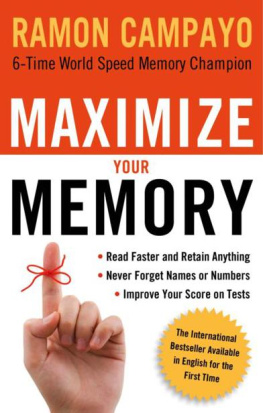
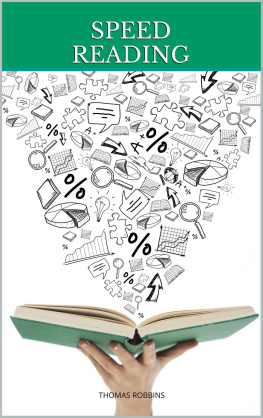


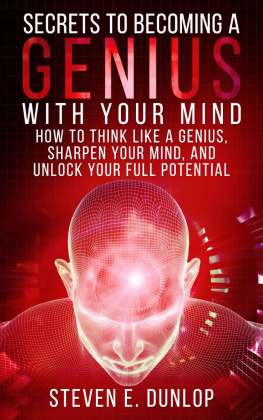
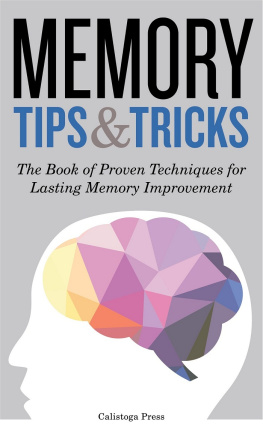
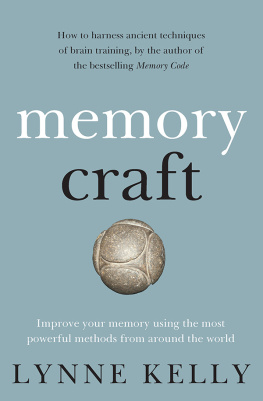
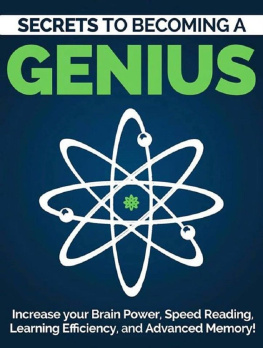
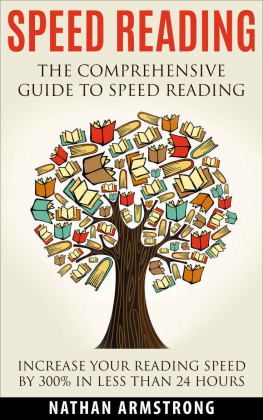

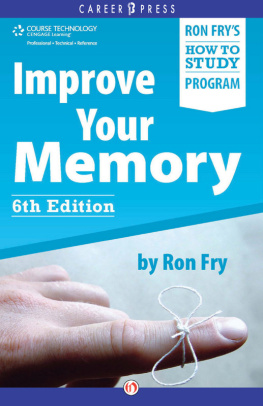




 he presentation of this book arises from a true need, a calling on behalf of many people, many students and many friends, who are interested in my study and memorization methods. I would like to thank all of you for the splendid "pressure" you have put on me, thanks to which I am now sitting in front of the keyboard of my computer. I am taking those first steps toward writing this complete course, which covers all the necessary know-how to satisfy curious readers, beginners and professionals alike.
he presentation of this book arises from a true need, a calling on behalf of many people, many students and many friends, who are interested in my study and memorization methods. I would like to thank all of you for the splendid "pressure" you have put on me, thanks to which I am now sitting in front of the keyboard of my computer. I am taking those first steps toward writing this complete course, which covers all the necessary know-how to satisfy curious readers, beginners and professionals alike.


